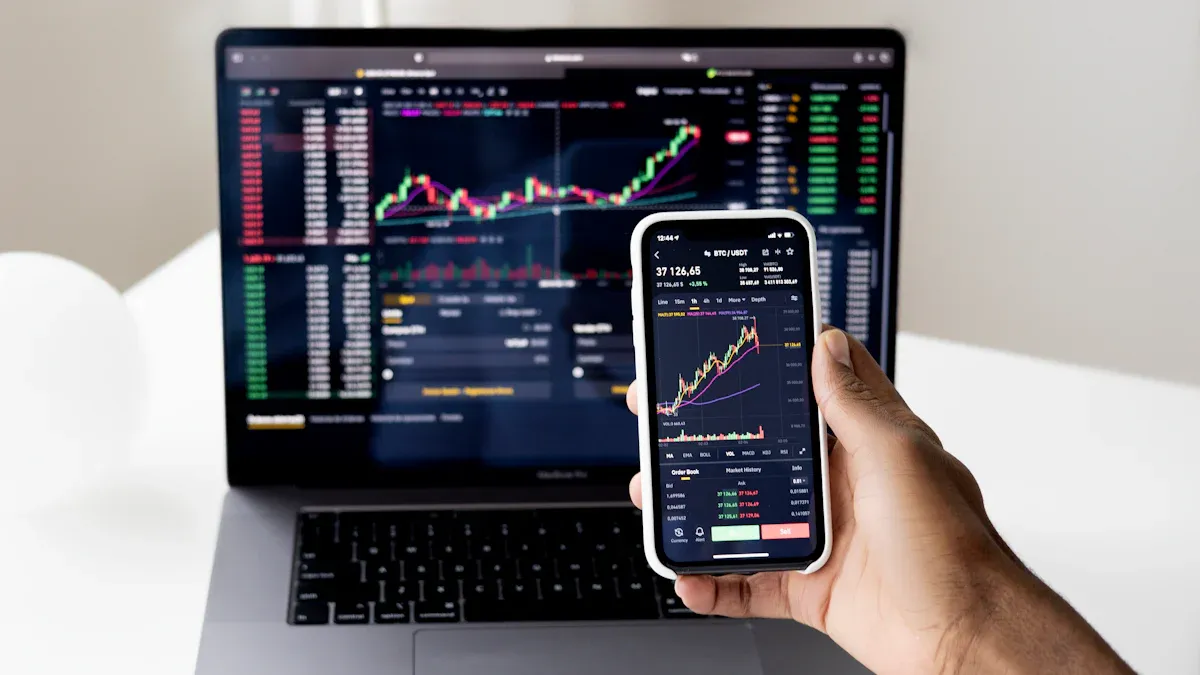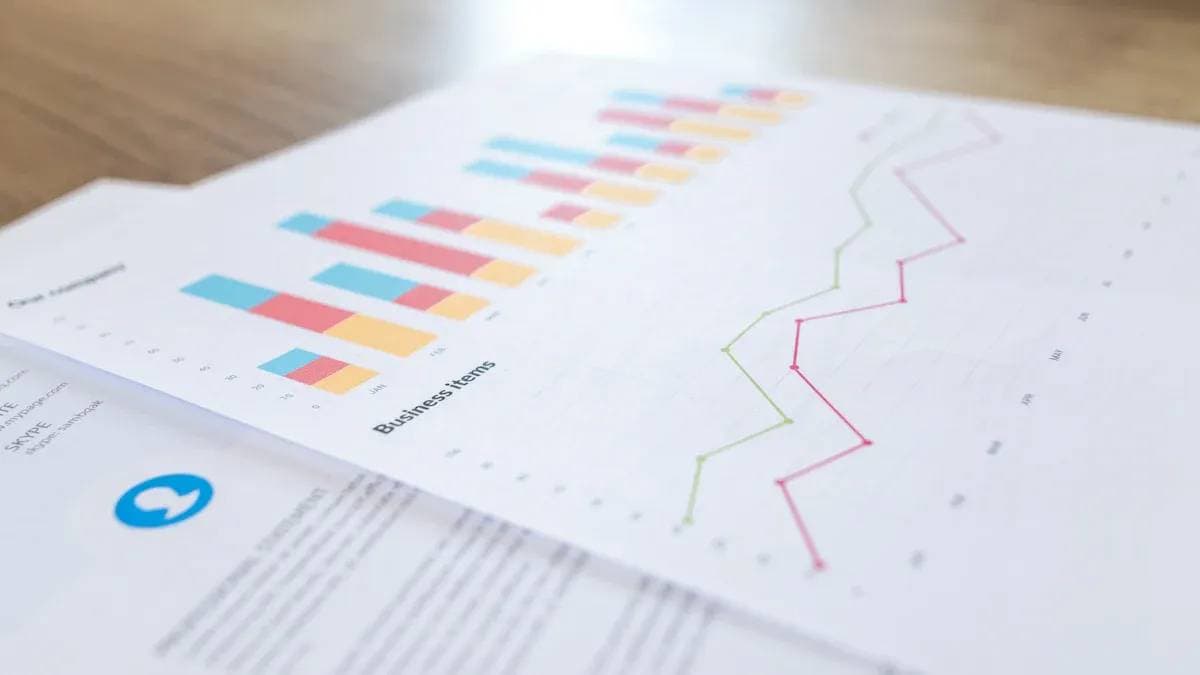- EasyCard
- Trade
- Help
- Announcement
- Academy
- SWIFT Code
- Iban Number
- Referral
- Customer Service
- Blog
- Creator
Hong Kong Stock Trading Hours: Key Sessions and Strategies Investors Must Know

Image Source: pexels
When investing in Hong Kong stocks, you must understand Hong Kong stock trading hours. The Hong Kong stock market is divided into multiple sessions each day:
| Trading Session | Time |
|---|---|
| Pre-opening Auction Session | 9:00 am - 9:30 am |
| Morning Continuous Trading Session | 9:30 am - 12:00 pm |
| Lunch Break | 12:00 pm - 1:00 pm |
| Afternoon Continuous Trading Session | 1:00 pm - 4:00 pm |
| Closing Auction Session | 4:00 pm - 4:10 pm |
You need to arrange your buying and selling timings based on your trading needs. Mastering these sessions helps you participate in the market more efficiently.
Key Points
Understanding Hong Kong stock trading hours allows you to arrange buying and selling timings rationally. Grasping the characteristics of each session helps improve trading efficiency.In the morning session, market activity is high, and information is reflected quickly. Use this period to seize market opportunities and set stop-loss orders to reduce risks.The midday session typically has lower trading volume, suitable for calm market analysis. You can choose to observe and wait for new market trends to emerge.The last half-hour before closing sees increased market activity again. Manage risks, observe market trends, and adjust holdings as needed.Novice investors should avoid common pitfalls, such as lacking clear goals or blindly chasing price surges. Set clear investment goals and diversify investments to reduce risks.
Hong Kong Stock Trading Hours

Image Source: pexels
Regular Trading Day Schedule
You need to understand the detailed schedule of Hong Kong stock trading hours. The Hong Kong stock market is divided into multiple sessions on regular trading days. You can refer to the table below to clearly grasp the specific timings of each session:
| Market | Opening Time | Lunch Break | Closing Time |
|---|---|---|---|
| Hong Kong | 9:30 a.m. - 4 p.m. | 12 p.m. - 1 p.m. | 4 p.m. |
| Japan | 9 a.m. - 3 p.m. | 11:30 a.m. - 12:30 p.m. | 3 p.m. |
| Shanghai | 9:30 a.m. - 3 p.m. | 11:30 a.m. - 1 p.m. | 3 p.m. |
| India | 9:15 a.m. - 3:30 p.m. | None | 3:30 p.m. |
| Korea | 9 a.m. - 3:30 p.m. | None | 3:30 p.m. |
You can see that, compared to other Asian markets, Hong Kong’s trading hours feature a shorter lunch break and a longer afternoon trading session. When planning your trades, you need to pay special attention to the lunch break and closing times to avoid missing key buying and selling opportunities.
Pre-opening Session
In Hong Kong stock trading hours, the pre-opening session is crucial. From 9:00 am to 9:30 am, you can submit limit orders to participate in the pre-opening session. This phase is divided into several sub-periods:
9:00 am - 9:15 am: You can enter, modify, or cancel auction orders and auction limit orders.
9:15 am - 9:20 am: This is the non-cancellable period. You can only enter new orders, not modify or cancel existing ones.
9:20 am - 9:22 am: The order matching period, where the system automatically matches orders based on price and time priority.
9:22 am - 9:30 am: The blocking period, where the system does not accept any new orders or operations.
You need to pay special attention to the non-cancellable period from 9:15 am to 9:20 am. Once this period begins, you cannot cancel or modify orders. If you place an order before this period, you must ensure the price and quantity are accurate. This rule helps prevent sharp market fluctuations before the opening and enhances market fairness.
Midday and Closing
Hong Kong stock trading hours include a one-hour lunch break from 12:00 pm to 1:00 pm. You cannot conduct buying or selling operations during the lunch break. After the lunch break, the market resumes activity. You can use the lunch break to analyze the morning’s market trends and adjust your afternoon trading strategy.
| Research Topic | Result |
|---|---|
| Impact of Lunch Break on Price Efficiency | Information response during the lunch break is slower, and price adjustments are less rapid than overnight announcements. |
| Liquidity Comparison of Lunch and Overnight Announcements | Overnight announcements have a stronger impact on liquidity. |
| Efficiency of Morning Opening Prices | Morning prices are more efficient and information-rich. |
You can observe that the market’s response to new information is slower during the lunch break. If you focus on important announcements, it’s advisable to adjust your holdings promptly in the morning or after the lunch break. The closing phase of Hong Kong stock trading hours (4:00 pm - 4:10 pm) is the closing auction session. You can submit closing price orders during this period, and the system matches the final closing price based on all orders. If you want to trade at the closing price, you can operate during this session.
When formulating your investment strategy, you need to consider the various phases of Hong Kong stock trading hours. Each time period has distinct market liquidity and price volatility characteristics. You can flexibly choose the appropriate session for trading based on your trading style.
Key Period Characteristics
Morning Session
During the morning session (9:30 am - 12:00 pm), you will notice high market activity. Many investors place orders during this period, and market information is reflected quickly. Morning prices are generally more efficient, reflecting changes from the previous night’s global markets. You can use the morning session to quickly seize market opportunities.
During the morning session, the market reacts quickly to new information. If you follow the trends of U.S. stocks or other international markets, you can adjust your investment strategy immediately after the Hong Kong market opens.
Midday Session
The midday session (1:00 pm - 4:00 pm) sees changes in market liquidity. You will find that trading volume is typically lower than in the morning session. According to market data, trading volume decreases during midday, and price fluctuations tend to stabilize. You can refer to the table below:
| Trading Session | Stock Price | Trading Volume | Change |
|---|---|---|---|
| Regular Trading | 21.96 | 53.3 M | -7% |
| Midday | 21.97 | 38.0 M | -2% |
During the midday session, you can choose to observe and wait for new market directions to emerge. If you prefer stable operations, the midday session may be more suitable for you.
Pre-closing Session
Before the market closes (3:30 pm - 4:00 pm), you will notice new market changes. You will see some investors making final buying and selling adjustments during this period. Trading volume may rise again, with some funds entering or exiting the market. If you aim to trade at the closing price, you can submit orders during the closing auction session (4:00 pm - 4:10 pm). Price volatility may increase during this period, so you need to closely monitor market dynamics.
Pre-opening Non-cancellable Period
The pre-opening non-cancellable period (9:15 am - 9:20 am) significantly impacts your trading strategy. During this period, you can only submit new orders, not modify or cancel existing ones. See the table below:
| Non-cancellable Period | Rules | Impact |
|---|---|---|
| 9:15-9:20 | Only buy market orders and buy limit orders can be submitted; orders cannot be canceled or modified | Helps stabilize the market and prevents last-minute order changes from causing volatility |
When placing orders during this period of Hong Kong stock trading hours, you must ensure the order details are accurate. This rule helps stabilize the market and prevents sharp fluctuations near the opening. If you want to gain an advantage at the market open, you need to prepare in advance.
Investment Strategies

Image Source: pexels
Morning Session Strategies
During the morning session, you can take advantage of the market’s rapid response to information. Many investors adjust their holdings at the start of Hong Kong stock trading hours based on the previous night’s U.S. market trends. You can follow international news and company announcements to capture price fluctuations promptly.
If you prefer short-term trading, you can choose stocks with high liquidity during the morning session. You can set stop-loss orders to reduce risks from sudden market movements.
The morning session has significant market volatility, so it’s advisable not to invest all your funds at once. You can build positions gradually, observing the market direction before making further decisions.
A common pitfall is chasing price surges or panic selling. If you see a stock rising rapidly in the morning, analyze the reasons for the surge first to avoid blindly following the trend.
Midday Session Strategies
The midday session typically has lower trading volume than the morning session. You can use this time for calm analysis. Many investors reassess the morning’s market performance after the lunch break and adjust their afternoon trading plans.
You can choose to observe and wait for new market trends to emerge. If you prefer stable investments, you can select stocks with lower volatility during the midday session to reduce short-term risks.
The midday session is suitable for reviewing morning trades and optimizing afternoon strategies based on the latest announcements and market data.
Some investors overlook market changes during the midday session, missing key buying or selling opportunities. You can set alerts to stay updated on critical news and price movements.
Pre-closing Session Strategies
The last half-hour before closing sees increased market activity again. You can use this period to consolidate the day’s investment outcomes.
Here are best practices for pre-closing trading:
Manage risks, ensuring each trade’s position does not exceed 10% of your portfolio, and consider reducing it to 5% before closing.
Use stop-loss orders to protect investments, especially when you cannot monitor the market in real-time.
Observe market trends; stocks with upward trends may continue rising, while those with downward trends may fall further.Pay attention to large transactions by institutional investors before closing, as they may impact price movements.
You can adjust your holdings before closing based on market consensus. If a stock performs strongly throughout the day, you can consider adding to your position before the close.
Many investors make impulsive trades before closing, so it’s advisable to strictly control position sizes to avoid losses from short-term fluctuations.
Pre-opening Session Strategies
The pre-opening session offers you an opportunity to position in advance. From 9:00 am to 9:30 am, you can submit limit orders to participate in the pre-opening session.
You can adopt the following strategies:
Breakout trading: After a period of price consolidation, focus on relevant news announcements and trade on the resulting price movements.Hedge gap risk: You can hedge in the after-hours market to reduce the risk of significant price fluctuations at the opening of the main trading session.
When placing orders during the pre-opening non-cancellable period (9:15 am - 9:20 am), you must ensure order details are accurate.
Pre-opening strategies allow you to lock in target prices in advance, avoiding missed opportunities due to market volatility after the opening.
A common pitfall is ignoring the non-cancellable period’s rules, leading to inability to modify or cancel orders. You can plan ahead to ensure each order aligns with your investment goals.
Practical Recommendations
Choosing Trading Sessions
When selecting Hong Kong stock trading sessions, you need to consider your investment goals and market activity levels. Each time period has distinct liquidity and price volatility characteristics. The table below helps you quickly understand the schedule of each session:
| Trading Time | Current Schedule |
|---|---|
| Pre-opening Session | 09:00-09:30 |
| Morning Market | 09:30-12:00 |
| Morning Market Continuation | 12:00-13:00 |
| Afternoon Market | 13:00-16:00 |
| Closing Auction Session | 16:01-16:10 |
You can seize opportunities after the market opens in the morning session or choose a more stable trading environment during the midday session. If you focus on the closing price, operate during the closing auction session. You should flexibly choose the appropriate session based on your trading style and risk tolerance.
Common Pitfalls for Novices
Many novice investors in Hong Kong stocks make typical mistakes. You can refer to the following common pitfalls to take preventive measures:
- Lack of clear financial goals and failure to follow through
- Putting all eggs in one basket or spreading them across too many baskets
- Attempting to time the market
- Letting fear, greed, or hype dominate decisions
- Paying excessively high fees
Before investing, you should set clear goals and stick to them. You also need to diversify investments to avoid excessive concentration or over-diversification. You should not blindly chase market hot spots or let emotions influence decisions. When choosing brokerage services, pay attention to fee structures to avoid unnecessary costs.
Improving Trading Efficiency
You can improve Hong Kong stock trading efficiency through various methods:
- You should prioritize market analysis, spending time studying charts, economic reports, and global trends to reduce risks and enhance returns.
- You can adopt risk control strategies, such as setting reasonable position sizes, stop-loss mechanisms, and diversified portfolios to protect your capital.
- You can leverage advanced technological tools, such as real-time analytics and automated trading strategies, to improve decision-making speed and accuracy.
- Trading during high-liquidity periods helps you achieve better prices and reduce slippage.
- You should understand compliance requirements and industry best practices to ensure transparent and compliant trading.
- You can actively participate in investment forums and professional networks to stay updated on market dynamics and exchange experiences.
- You can also focus on emerging technologies like blockchain, cloud platforms, and artificial intelligence, which can enhance trading security and efficiency.
Continuous learning and optimization of trading methods will help you achieve a better investment experience in the Hong Kong stock market.
You have now understood the characteristics and applicable strategies of each Hong Kong stock trading session. You can flexibly choose suitable trading sessions based on your investment goals and risk preferences. Different sessions have varying market activity and price volatility. You should develop a personalized investment plan based on your situation to seize opportunities in the Hong Kong stock market.
Continuous learning and practice will help you improve your investment skills and achieve better returns.
FAQ
Do Hong Kong stock trading hours overlap with the U.S. market?
You will find that Hong Kong stocks do not directly overlap with the U.S. market. When the Hong Kong market opens, the U.S. market has already closed. You can adjust your Hong Kong stock strategy based on the previous night’s U.S. market trends.
Can you buy and sell at any time during Hong Kong stock trading hours?
You can only buy and sell during continuous trading sessions. The pre-opening and closing auction sessions allow only specific types of orders. You need to understand the rules of each session in advance to avoid operational errors.
What fees are required for Hong Kong stock trading?
When trading Hong Kong stocks, you need to pay commissions, trading levies, and trading system usage fees. Some Hong Kong-licensed banks also charge platform service fees. All fees are typically settled in USD.
Are Hong Kong stock trading hours adjusted for holidays?
You need to pay attention to the holiday schedule announced by the Hong Kong Stock Exchange. The market is closed on holidays. On some special days, the market may close early, so you should check the official calendar in advance.
Which time zone do Hong Kong stock trading hours follow?
Hong Kong stock trading hours follow Hong Kong Time (GMT+8). When operating across time zones, you need to be mindful of the time difference to avoid missing key trading periods.
By mastering Hong Kong stock trading hours and their strategic implications, you’ve learned to seize early morning opportunities, analyze calmly during midday, and optimize positions before close, but high cross-border fees, currency volatility, and complex offshore account setups can limit swift responses to HK market swings, especially during pre-open or closing auctions. Imagine a platform with 0.5% remittance fees, same-day global transfers, and zero-fee contract limit orders, enabling seamless trading strategies via one account?
BiyaPay is tailored for HK stock investors, offering instant fiat-to-digital conversions to act on market signals nimbly. With real-time exchange rate query, monitor USD or HKD trends and transfer at optimal moments to cut costs. Covering most regions with instant arrivals, it powers rapid allocations to Hang Seng Index ETFs (like 2800.HK) or trending tech stocks. Crucially, trade HK and U.S. markets through a single account, leveraging zero-fee contract limit orders for breakout or closing auction strategies.
Whether capitalizing on high-liquidity mornings or refining midday positions, BiyaPay fuels your edge. Sign up now, visit stocks for HK prospects—quick setup unlocks cost-effective, data-driven investing. Join global investors and thrive in 2025’s markets!
*This article is provided for general information purposes and does not constitute legal, tax or other professional advice from BiyaPay or its subsidiaries and its affiliates, and it is not intended as a substitute for obtaining advice from a financial advisor or any other professional.
We make no representations, warranties or warranties, express or implied, as to the accuracy, completeness or timeliness of the contents of this publication.




Contact Us
Company and Team
BiyaPay Products
Customer Services
is a broker-dealer registered with the U.S. Securities and Exchange Commission (SEC) (No.: 802-127417), member of the Financial Industry Regulatory Authority (FINRA) (CRD: 325027), member of the Securities Investor Protection Corporation (SIPC), and regulated by FINRA and SEC.
registered with the US Financial Crimes Enforcement Network (FinCEN), as a Money Services Business (MSB), registration number: 31000218637349, and regulated by FinCEN.
registered as Financial Service Provider (FSP number: FSP1007221) in New Zealand, and is a member of the Financial Dispute Resolution Scheme, a New Zealand independent dispute resolution service provider.



















